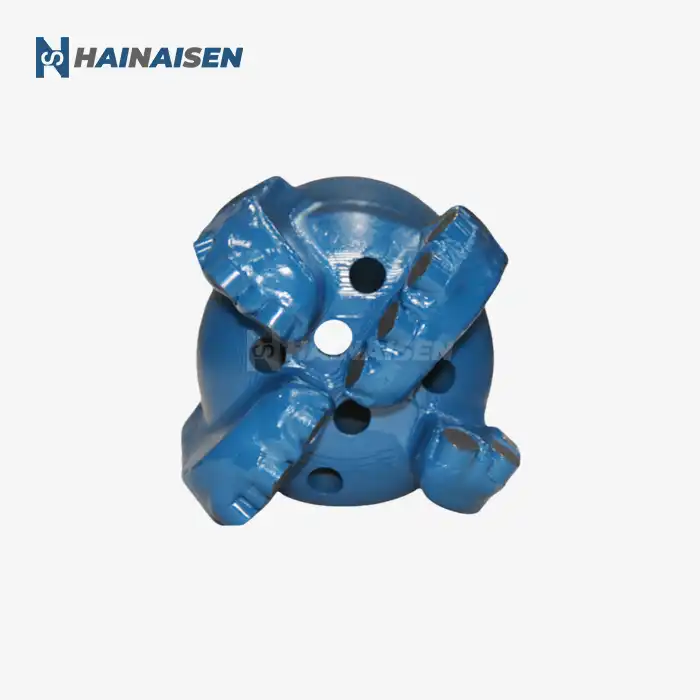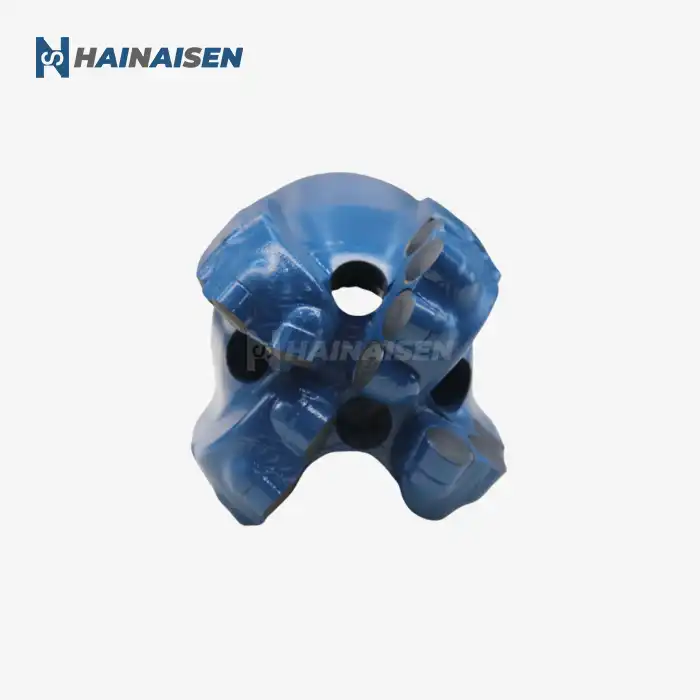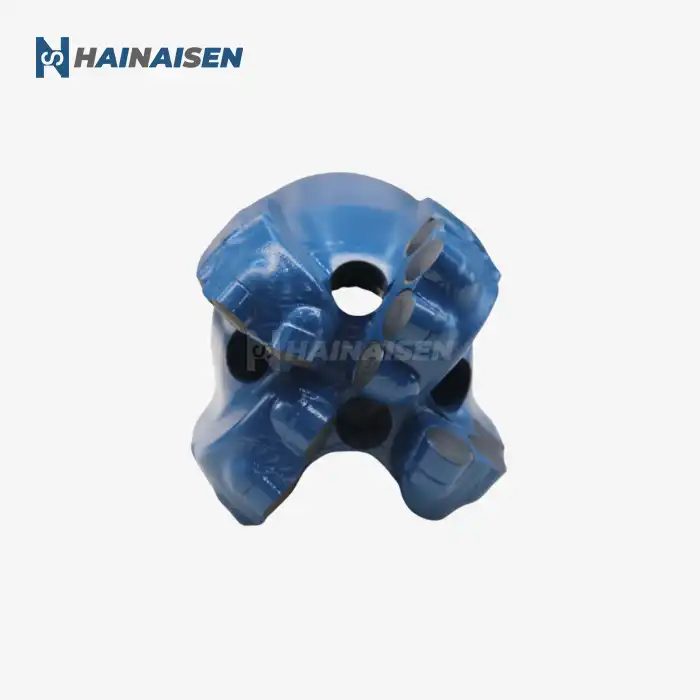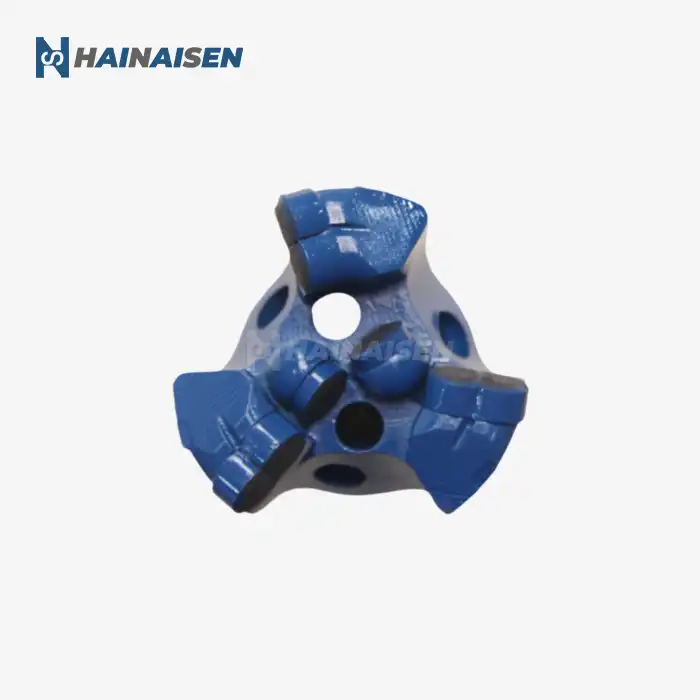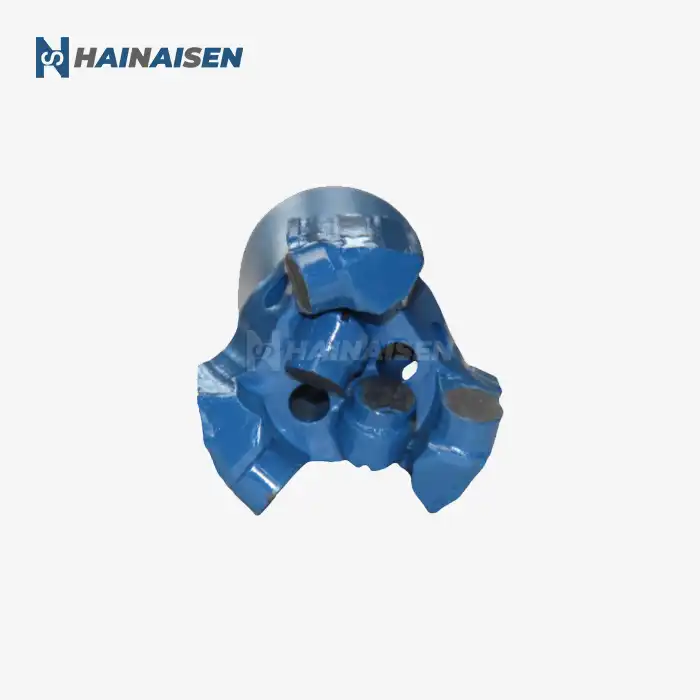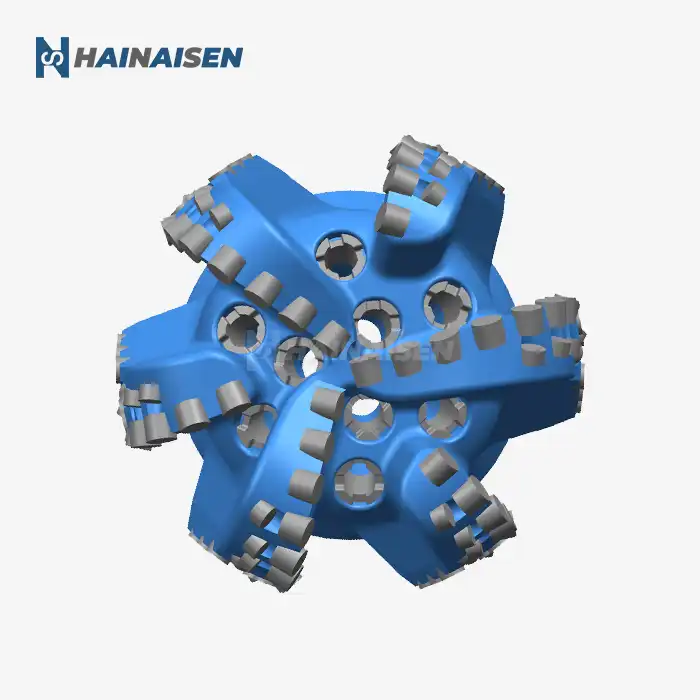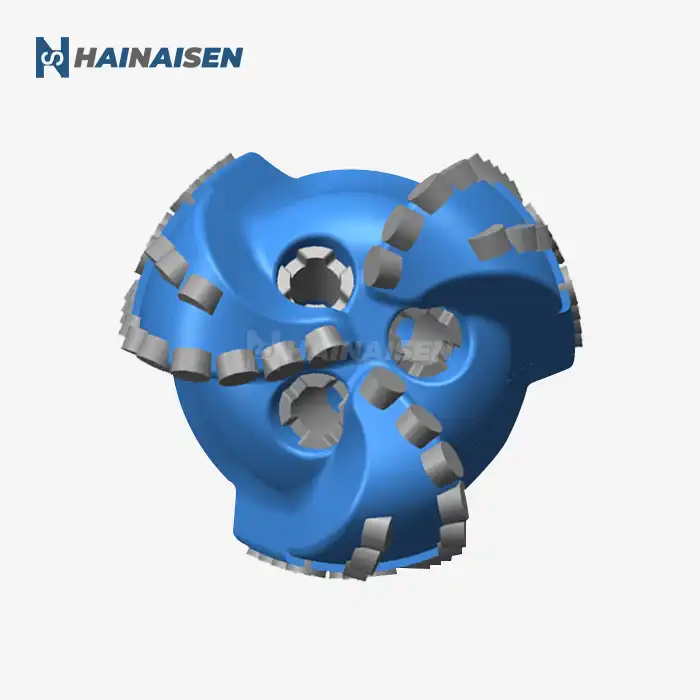Cutter Placement: Balancing Stability and Aggression
The art of cutter placement on a Directional Well PDC Drill Bit is akin to choreographing a complex dance where each performer must be positioned precisely to create a harmonious and effective performance. In this case, the performers are the PDC cutters, and the stage is the bit face. The primary goal is to strike a delicate balance between stability and aggressiveness, two seemingly contradictory qualities that are essential for efficient directional drilling.
The Stability Factor
Stability in a PDC bit is paramount, especially in directional drilling applications where maintaining a consistent wellbore trajectory is crucial. A stable bit resists lateral movement and vibration, which can lead to a phenomenon known as "bit whirl." Bit whirl not only reduces drilling efficiency but can also cause premature wear and damage to the cutters. To enhance stability, cutter placement often follows a spiral pattern from the center to the gauge of the bit. This design distributes the cutting forces evenly across the bit face, preventing any single area from experiencing excessive load.
Aggressive Cutting Action
While stability is essential, a bit that's too stable may lack the necessary aggressiveness to maintain an acceptable rate of penetration (ROP). Aggressive cutting action is achieved by optimizing the cutter exposure and angle of attack. Cutters placed with a higher exposure and more aggressive back rake angle can remove more rock per revolution but may also increase the likelihood of vibration and instability. The challenge lies in finding the sweet spot where the bit is aggressive enough to maintain a high ROP without compromising stability.
The Role of Redundancy
Another critical aspect of cutter placement is redundancy. Strategic placement of backup cutters ensures that if primary cutters become worn or damaged, secondary cutters can take over the cutting action. This redundancy is particularly important in directional drilling, where bit trips for replacements can be extremely costly and time-consuming. The backup cutters are typically set at a slightly different height and angle to provide a fresh cutting surface when needed, extending the bit's life and maintaining performance over longer runs.
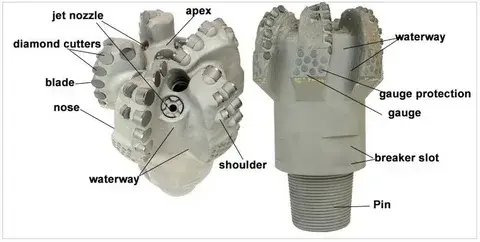
Impact of Cutter Layout on Directional Control
The cutter layout of a Directional Well PDC Drill Bit significantly influences its directional control capabilities, a critical factor in achieving precise wellbore placement. The arrangement of cutters can enhance or hinder the bit's ability to respond to steering inputs from the bottom hole assembly (BHA), ultimately affecting the accuracy and efficiency of directional drilling operations.
Asymmetric Designs for Improved Steerability
Directional control is often enhanced through asymmetric cutter layouts. These designs intentionally create an imbalance in the cutting forces, which can be harnessed to facilitate steering. For instance, a bit with a higher concentration of cutters on one side may naturally tend to drift in the opposite direction when drilling. This inherent bias can be utilized by directional drillers to maintain or adjust the wellbore trajectory with minimal tool face adjustments.
Gauge Pad Configuration
The configuration of cutters on the gauge pads plays a crucial role in directional control. Longer gauge pads with strategically placed cutters can provide better borehole quality and improved directional stability. Some advanced designs incorporate active gauge elements that can be adjusted to fine-tune the bit's directional response. These elements may include specialized cutters or wear-resistant inserts that can be engaged or disengaged to influence the bit's tendency to build, drop, or maintain angle.
Cutter Density and Distribution
The density and distribution of cutters across the bit face also impact directional control. A higher cutter density in the cone and nose sections can provide more aggressive cutting action in the center of the hole, which is beneficial for initiating directional changes. Conversely, a more evenly distributed cutter layout may offer better stability and hole quality in tangent sections where maintaining a consistent direction is priority.
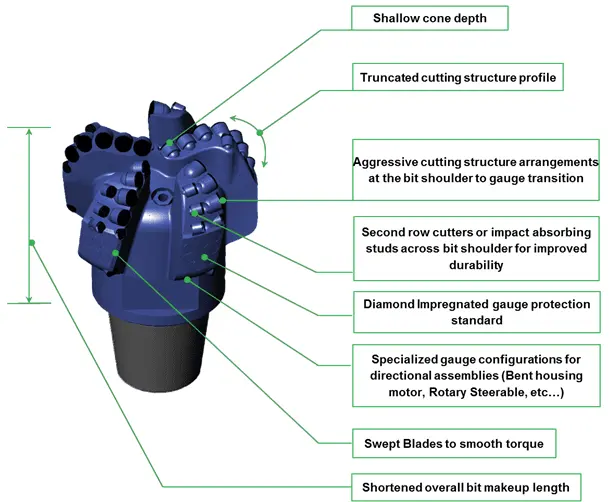
Optimizing Cutter Patterns for Different Formations
The efficacy of a Directional Well PDC Drill Bit is intrinsically linked to its ability to adapt to varying formation characteristics. Optimizing cutter patterns for different geological conditions is a complex process that requires a deep understanding of rock mechanics, fluid dynamics, and bit-rock interaction.
Formation-Specific Cutter Configurations
Different formations demand different cutter configurations to achieve optimal drilling performance. In soft formations, a less dense cutter pattern with larger, more exposed cutters can facilitate rapid penetration without bit balling. Conversely, hard formations require a denser cutter layout with smaller, more numerous cutters to distribute the load and prevent premature wear. The challenge lies in designing bits that can effectively transition between different formation types, often encountered in a single well.
Hydraulic Considerations
The cutter layout must also be optimized in conjunction with the bit's hydraulic design. Proper placement of nozzles relative to the cutters ensures efficient cleaning and cooling of the cutting structure. In abrasive formations, enhanced hydraulics near high-wear areas can significantly extend bit life. Some advanced designs incorporate variable nozzle sizing and positioning to optimize flow patterns for different formation types and drilling parameters.
Adaptive Cutter Technology
Emerging technologies are pushing the boundaries of cutter pattern optimization. Adaptive cutter designs, which can adjust their exposure or orientation based on formation changes, are being developed. These innovative approaches aim to create bits that can self-optimize for varying drilling conditions, potentially revolutionizing directional drilling efficiency and precision.
Simulation and Modeling
Advanced computer modeling and simulation tools play a crucial role in optimizing cutter patterns. These sophisticated programs allow engineers to virtually test different cutter configurations under various drilling conditions before physical prototypes are created. By simulating the complex interactions between the bit, formation, and drilling fluid, engineers can fine-tune cutter layouts to achieve the best balance of ROP, stability, and directional control for specific well profiles and formation sequences.
In conclusion, the cutter layout of a Directional Well PDC Drill Bit is a critical factor that influences every aspect of its performance. From maintaining stability and aggressiveness to enhancing directional control and adapting to various formations, the strategic placement of cutters is paramount to drilling success. As drilling operations venture into more challenging environments and demanding well profiles, the importance of optimized cutter layouts will only continue to grow.
Are you looking to enhance your directional drilling capabilities with cutting-edge PDC bit technology? Shaanxi Hainaisen Petroleum Technology Co., Ltd. specializes in developing custom Directional Well PDC Drill Bits tailored to your specific drilling challenges. Our experienced R&D team utilizes advanced design techniques and state-of-the-art manufacturing processes to create bits that deliver superior performance in even the most demanding formations. Whether you're a large oil service company seeking long-term partnership or a coal mining operation in need of cost-effective solutions, we have the expertise to meet your needs. Contact us today at hainaisen@hnsdrillbit.com to discuss how our innovative PDC bits can optimize your directional drilling operations and drive down your overall project costs.
References
1. Smith, J.R. and Brown, T.L. (2021). "Advanced Cutter Layout Strategies for Directional PDC Bits," Journal of Petroleum Technology, vol. 73, no. 5, pp. 42-48.
2. Chen, D., et al. (2020). "Optimization of PDC Bit Cutter Layout for Improved Directional Drilling Performance," SPE Drilling & Completion, vol. 35, no. 3, pp. 256-270.
3. Williams, K. and Johnson, A. (2019). "The Impact of Cutter Configuration on PDC Bit Stability in Directional Drilling Applications," Proceedings of the International Petroleum Technology Conference, Beijing, China.
4. Nguyen, T.H. (2022). "Formation-Adaptive Cutter Patterns: A New Frontier in PDC Bit Design," Offshore Technology Conference, Houston, Texas, USA.
5. Garcia, M. and Lee, S.K. (2020). "Computational Modeling of PDC Bit Cutter Interactions for Optimized Directional Drilling," Journal of Petroleum Science and Engineering, vol. 184, 106523.
6. Roberts, E.J. (2021). "Advancements in PDC Cutter Technology for Enhanced Directional Control," World Oil, vol. 242, no. 9, pp. 51-55.



